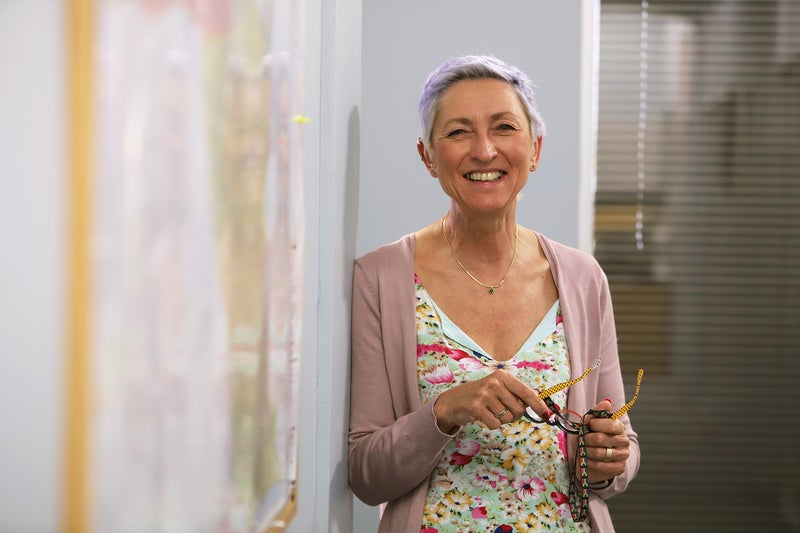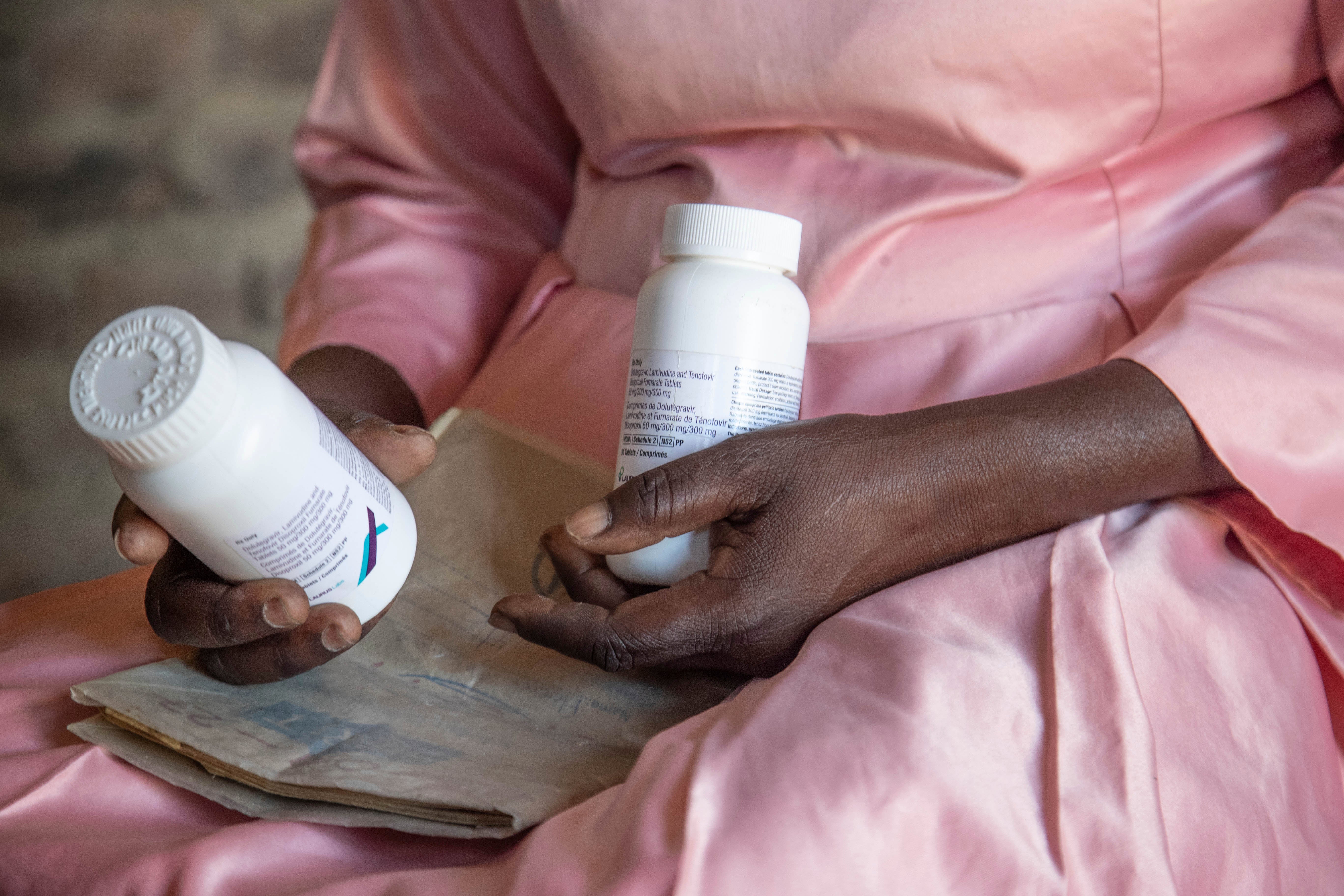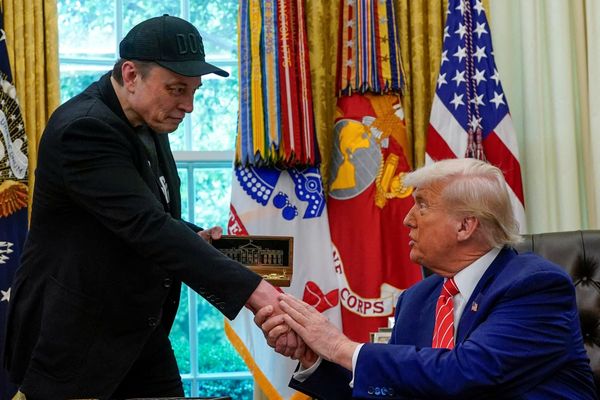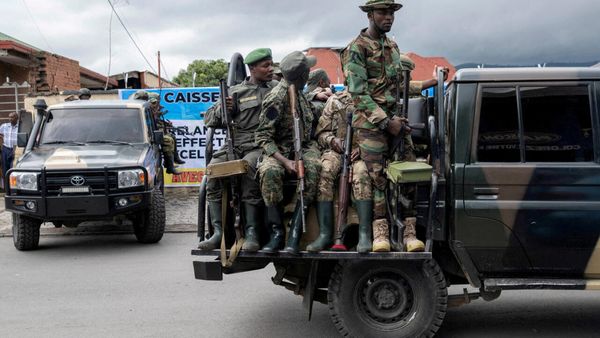Professor Linda-Gail Bekker recalls having “shivers” when she found out that not one single woman given a revolutionary new jab in her medical trial had caught HIV.
She told a global Aids summit last year that she “literally burst into tears”. Now, she tells The Independent, that emotion has turned into an “acute sense of despair”.
The funding to get lenacapavir – a twice-yearly preventative jab that has been described as the nearest thing we have to an HIV vaccine – out to at least 2 million people around the globe is in question thanks to the turmoil accompanying Donald Trump’s decision to slash US aid spending.
Lenacapavir stops HIV from replicating, meaning that as long as someone is on the drug, they are almost totally protected from developing the virus if they are exposed to it. Prof Bekker’s study found a 96 per cent reduction in HIV overall – but in the arm of the trial looking at women and adolescent girls, there were no infections at all.
Watch Bel Trew’s documentary Death Sentence – The real cost of Trump’s aid cuts on HIV
In December, global funders, led by the US President’s Emergency Plan for Aids Relief (Pepfar) and the Global Fund to Fight Aids, Tuberculosis and Malaria, promised to secure enough doses of the jab to protect at least two million people over three years. Its manufacturer, Gilead, says it will sell these at no profit, though it has not made the cost of a dose public. Gilead has also signed agreements with six pharmaceutical companies in India, Pakistan, Egypt, and the US to allow them to make generic versions of the drug in order to increase supply and drive down the cost of the jab.
A significant chunk of the money to fund the doses of lenacapavir was set to come from the US-led global Aids response programme, Pepfar. But this funding, and the future of Pepfar itself, is now uncertain.
“In all of the excitement [of the trial results], we were thinking, well, what do you do with [the] doses? What’s the best way to use it?” Prof Bekker says. “Suddenly, that is very much up in the air.”
The other main funding source has said that it still aims to fund the doses of lenacapavir. Speaking to The Independent, however, Global Fund executive director Peter Sands tempers this by saying the success of his organisation’s funding round coming up later this year would “determine how much scope we have for this”. The US was the Global Fund’s biggest donor.

Mr Sands says that while he would “love to say” the Global Fund could fill the gap, this would be contingent on how much money is raised from governments and private donors.
"Despite all the uncertainties both around Pepfar and our own future funding, we are still very keen to deliver on the ambition,” he says. However, more funding than it has currently been pledged will be needed to “realise the full potential of lenacapavir”.
At the World Health Organisation (WHO)’s annual decision-making meeting which concluded late last month, the United Nations’ Aids agency (UNAIDS) called for “urgent action to avoid millions of avoidable HIV infections and Aids-related deaths”, saying this included “access to long-acting injectables for HIV prevention which are almost 100 per cent effective at preventing infections” – a nod to lenacapavir.
‘A missed opportunity’
Prof Bekker played a crucial role in trialling the jab in eight countries, including her homeland South Africa, and she was on the brink of seeing that breakthrough rolled out – it could have been in people’s arms by the end of this year.
Long-acting jabs like lenacapavir are not only about protecting individuals; they are a crucial part of ending the Aids pandemic, Prof Bekker explains.
“A six-monthly injectable is as close as we can get at this moment to a vaccine,” Prof Bekker says. Just like a vaccine, it can help keep whole populations safe by preventing vulnerable people from catching the virus and then potentially spreading the virus to more people.
“You finally have something that could actually bring us to a conclusion [of the Aids crisis].
“It just feels like such a calamitous missed opportunity,” she says.

Overcoming stigma
A daily preventative medicine – a combination of two drugs known collectively as pre-exposure prophylaxis (PrEP) – is already available and is very effective. But people without reliable access to healthcare find it harder to maintain a regime that involves regular pills.
Girls, young women and LGBT+ people in southern Africa can also face questioning from family members if they have packets of daily pills in their homes, which indicate they are sexually active, and it can put women in relationships at higher risk of domestic violence. A six-monthly jab, on the other hand, can be maintained more discreetly and with less user error.
Offering lenacapavir to young women – among the hardest to reach with HIV prevention – when they book into prenatal care can also prevent them from passing the virus onto their children. “That is a good use of money, right?” Prof Bekker says. “You’re saving two infections; one of them a lifelong infection in a child that will need antivirals for the next 70 to 75 years.”
“They are young people in front of us. We can introduce them to Republican congressmen if needed.”
A State Department spokesperson said: “Pepfar continues to support lifesaving HIV testing, care and treatment, and prevention of mother-to-child transmission services approved by the secretary of state.
“As directed by the secretary of state, all other Pepfar-funded services are being reviewed for assessment of programmatic efficiencies and consistency with United States foreign policy. Pepfar, like all assistance programmes, should be reduced over time as it achieves its mission.”
Ending Aids
Figures previously reported by The Independent suggest President Trump’s slashing of foreign aid has derailed the projected end of the Aids pandemic and could lead to four million extra deaths by 2030. The latest global figures show there were 1.3 million new HIV infections and roughly 630,00 people dying from Aids around the world in 2023.
Regardless of the cuts, before any doses can be made available, the drug has to be approved by regulators. The US Food and Drug Administration (FDA)’s decision is understood to be on track to approve the preventative jab on 19 June, followed by other national medicines regulators and the WHO. Before the cuts, an FDA approval would have marked the moment it would be full steam ahead to roll lenacapavir out to the people who need it most.
But those approvals won’t count for much if the money to pay for the drug and get it out to the people who need it doesn’t materialise, as Prof Bekker fears.
“It does feel like this thing that could help us end the epidemic sooner is suddenly receding in the chaos”.
This story is part of The Independent’s Rethinking Global Aid series
Trump blames Europe as deadly impact of US cuts on Aids pandemic grows
The Aids crisis was set to end by 2030 – now Trump’s cuts will mean 4 million more deaths
‘I can’t protect my unborn baby from HIV’: The stark reality of Trump’s aid cuts
Navy to rename more ships named after liberal icons in ‘woke’ purge
Outrage after California fourth grader is detained by ICE during immigration hearing
Steve Bannon keeps calling for Lindsey Graham to be ‘thrown in jail’ for Ukraine trip







